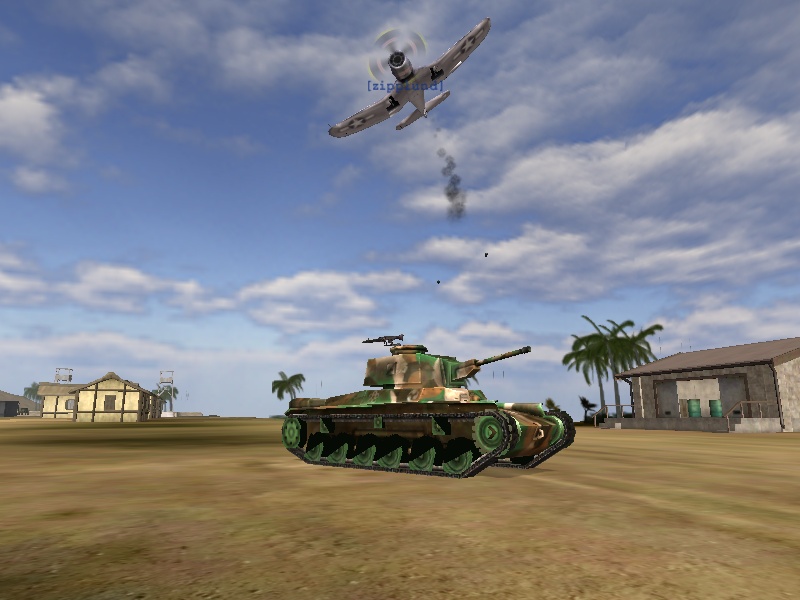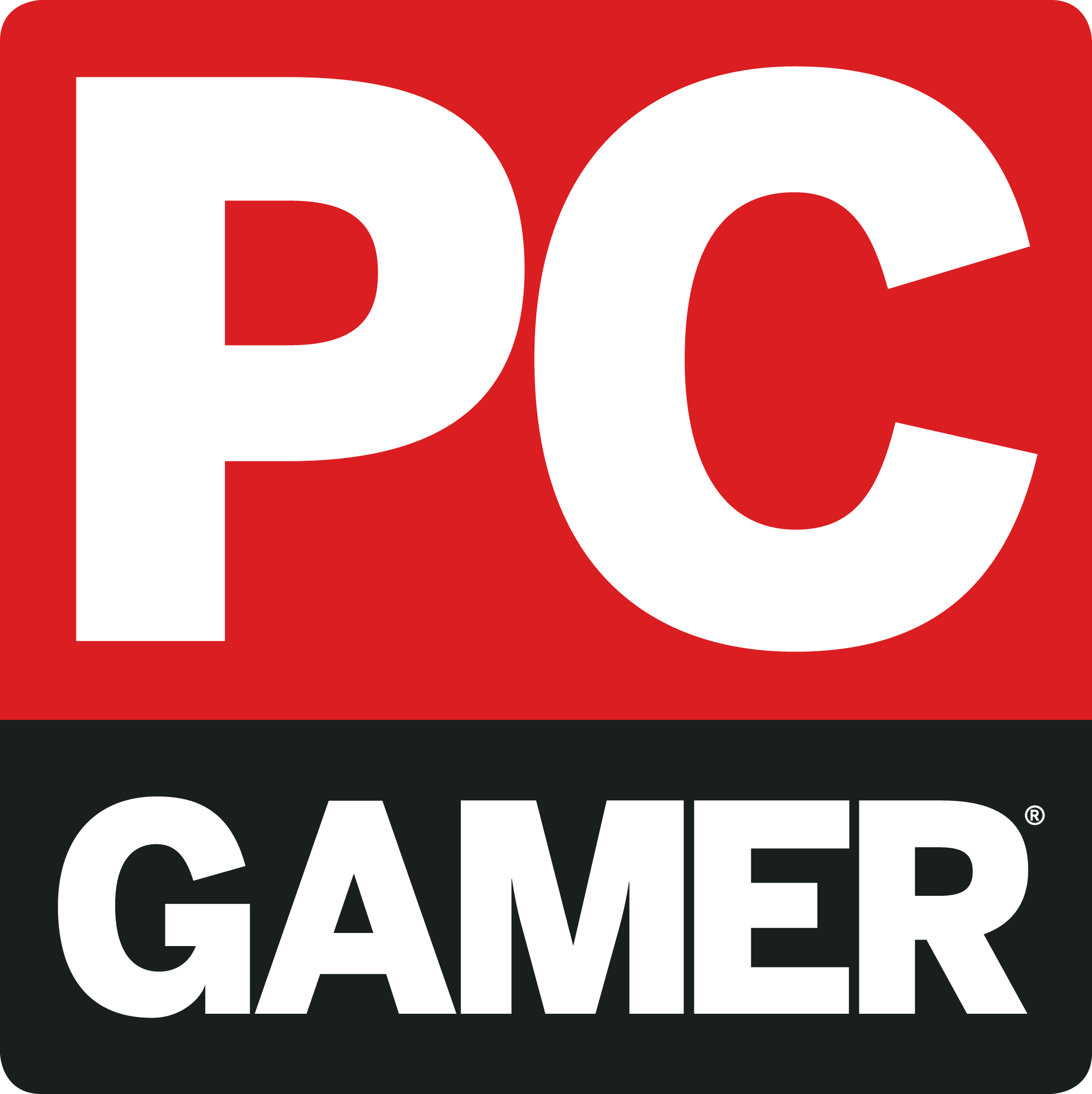Our Verdict
For action gamers with a fast rig and a fast connection, it's the Game of the Year.
PC Gamer's got your back
Tyler Wilde provides commentary followed by our original review of Battlefield 1942 from the December 2002 issue of PC Gamer US.
I keep seeing Battlefield Hardline derided as a "reskin," and though I'm not fond of the direction we've seen so far, I wonder if that's fair. If not a new theme and new weapons, gadgets, vehicles, modes, and maps, what is it to be a proper sequel? Does a sequel necessarily include significant graphical improvements? Is that a reasonable expectation today?
In IGN's review of Battlefield: Vietnam , the first Battlefield game after 1942, Dan Adams calls it "more like an impressive mod or an expansion than an entirely new game." So the feeling isn't new, and I suspect a game's 'sequel worthiness' isn't quantifiable—it's just something we feel. Battlefield 3 is clearly a sequel. BF4 and Hardline either aren't different enough, or aren't different in the right ways, so they get called "mods" or "expansions."
For primarily online games, I hope the Team Fortress 2 and EVE Online models (subscription aside) take off: just keep making the game better instead of releasing new versions. That doesn't work well in the console ecosystem, or with business-types who need to tell investors they're launching a new $60 game. Long term, though, you can build a lot of loyalty and love .
Oh, right, here's our review of Battlefield 1942, the grandfather of all this controversy and one of my favorite games of all time. I wonder what it would be like today if DICE had kept working on it for the past 12 years? Maybe it's better left alone, actually: the one thing I miss most in the new Battlefields is how much the physics has improved— I've embedded some BF1942 stunt videos to illustrate why fidelity isn't always better. (Not that you can't do some stupid stuff in BF4, but I miss standing on flying planes.)
Battlefield 1942 review
World War II on your computer, against 63 human players. The dream of ages has been realized.
You log on to a game and find yourself on the deck of a U.S. Navy carrier off the shore of Iwo Jima. The guns of a nearby battleship pummel Japanese positions on the island. You've got a choice between piling into a Higgins boat with several squadmates and setting off for a beach assault, or climbing into a Mustang fighter and heading up for a dangerous strafing run against island bases guarded by anti-aircraft cannon.
And all of the above manned by other live humans in a magnificent 64-player multiplayer environment.
That's just the tip of the heaven-sent iceberg that is Battlefield 1942. Its 16 maps cover an astonishing breadth and depth of WWII operations, including infantry pushes, tank charges, artillery bombarding, anti-aircraft guns, fighters, bombers, amphibious assault, naval warfare, and even submarines. There are 35 vehicles in all, plus 20 different weapons ranging from rifles to BARs to bazookas. All of these roles can be played in the game, most of them cooperatively in conjunction with teammates (i.e., a driver/rooftop gunner for tanks, or pilot/gunner for bombers). In a team-on-team multiplayer battle on the well-designed maps, you may well find yourself kissing your monitor out of sheer joy.
American, British, Russian, German, and Japanese forces are all modeled. Each map pits two forces against one another in a re-creation of a historic battle. The scenario designers took every conceivable opportunity to model elements of warfare that applied to the real setting — so, for example, tank maneuvers rule the El Alamein map, while beach assaults and aerial jousting feature heavily at Midway, and Stalingrad is nothing but a street-by-street urban meatgrinder of hand-to-hand killing. Each will teach you its own hard-won lessons in fighting, as you discover that tactics that work well on some maps will only get you massacred on others.
CAVEAT EMPTOR
But before I go on to gush about the fulfilling achievement that is Battlefield 1942, there are caveats to get out of the way. First: you'll **need** a broadband connection to derive any pleasure from the game whatsoever. (I suspect history will look back on this title as the one that finally drove every PC action gamer to broadband.) Even with a DSL connection, you'll still encounter a few servers fumbling to keep up the packet push. But the good news is that DSL **is** enough to get the job done on 90 percent of servers. Lag can crop up, but it hasn't been a consistent problem for me.
The other caveat is system specs: you'll want to play on at least a PIII 800, and preferably something over 1GHz. Even if you're only planning to play the included single-player campaign and bot modes, Battlefield has a lot of AI routines to run simultaneously, and they're a bear.
Provided you've got all that in order, you're in for a real treat — the realization of a virtual combat environment that ranks with any we've seen before. It's never difficult to get into the swing of the fight. The vehicles are simple to commandeer and employ arcade-style controls (there are **no** “sim” elements to this game).
One last warning I have to make is about the sound. Noticeable and distracting audio bugs cropped up on every system I tried this game on. There's rarely anything so bad that I had to quit out (though a few folks around the office experienced never-ending machinegun-noise loops that required a restart). But sound issues are a definite headache, and I fervently hope that patches resolve them.
The single-player option is a fairly rudimentary affair. The campaign mode lets you slug it out against bot AI, and is a good way to learn the maps and appropriate tactics for each battle — but it's battles without real purpose. More useful is a single-player mode that lets you play single battles against bots, with options to select the number of bots and to raise or lower their AI.
Bot AI is a mixed bag. Some behave with extraordinary tactical soundness, particularly in vehicles — plenty of pleasure can be derived from the armor battles in single-play. The infantry leave more to be desired: it's not uncommon to find squads stuck running into sandbags, and even the occasional tank crew staying put at base, seemingly refusing to roll out.
But honestly, you won't spend much time at all in single-play. The whole raison d' etre of this game is online multiplayer combat alongside and against human opponents.
MULTIPLAYER HEAVEN
So on to the good stuff. Connecting to a multiplayer game is relatively painless through EA's GameSpy server menu. Every now and then you'll encounter a “cannot connect” issue, but it's never a great problem.
The 16 maps represent theaters of conflict spanning North Africa and the Pacific to Western Europe (D-Day and the Bulge) and the Eastern Front. Some of them are claustrophobic death struggles, like Berlin and Iwo Jima, in which forces claw for control of a relatively tiny, cluttered piece of territory. Others are vast, expansive, slow-developing wars of attrition, as with the tank battle at El Alamein, which unfolds over massive swathes of empty desert.
Each is its own pleasure. Sometimes you're in the mood to jump right in the belly of the beast, in which case Stalingrad is your answer. Other times, you want to be part of a combined-arms “set piece” battle, in which case you might settle on a map of strategic and tactical complexity, like Market Garden. And **any time** is a good time for Omaha Beach, where shore bombardment, amphibious assault, and street fighting all come into play.
Five classes are available to pick from when you join in a battle. Scouts have sniper rifles, as well as field glasses with which they can “spot” targets for artillery further back. Assaulters get a very useful automatic rifle, and are the most effective in close combat. Anti-armor specialists hoist bazookas into battle, and make effective tank-killing infantry, though their reliance on a backup pistol makes them less than desirable for shootouts. Medics can patch up wounded comrades, and engineers have the handy ability to lay mines and detonation packs, as well as heal vehicles.
There are a few different multiplayer modes, but only one worth playing. While capture-the-flag, team deathmatch, and deathmatch (ugh!) are all available, Conquest is the only mode most people are playing. In these battles, the two opposing sides start off on opposite ends of the map, with unclaimed flags at the map's key strategic points. Control of a flag adds points to your team's running total, and you snip points from your enemy with each tick of the clock that a flag is in your control. Control them all, right up to the enemy's base, and you win a Major Victory.
I guess I also need to throw a bone to the co-op mode, in which all the humans play on one side against an enemy AI force. This mode forces you to act in cohesive units, and makes for a very engaging exercise in teamwork against the soulless armies of the computerized future.
The whole framework delivers a plethora of gaming experiences. Dive for cover as a fighter-bomber strafes your position, only to see the fighter chopped up and brought spiraling to the ground by an APC-mounted machinegun. Watch two guys slug it out in a tank duel, and then knock out the winner with a few well-tossed hand grenades. Charge from your Higgins boat onto Omaha Beach and snipe the Nazis in their hilltop machinegun bunker, only to get blown sky-high by inland artillery.
This review can really only offer a slight survey of the gameplay available — suffice it to say that the possibilities are almost limitless, and all of them impact strongly on the team-focused battle.
Battlefield 1942 is a special and wonderful game. It's not a sim in any shape, way, or form, and yet it feels like a murderously lifelike slice of WWII. If you've been waiting years, like I have, for the emergence of a truly multi-faceted shared-world action/wargame, it'll light up your eyes. — Dan Morris
For action gamers with a fast rig and a fast connection, it's the Game of the Year.
PC Gamer is the global authority on PC games—starting in 1993 with the magazine, and then in 2010 with this website you're currently reading. We have writers across the US, Canada, UK and Australia, who you can read about here.



